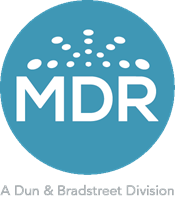MDR Releases Digital Marketing Trends in Education Report

SHELTON, Conn. – March 20, 2018 – MDR, a division of Dun & Bradstreet, today released its 2018 Digital Marketing Trends in Education report, the most comprehensive study of the online habits of educators available. The company analyzed nearly 400 million prospecting emails and 100 million web ad impressions across three years and dozens of industries to reveal the kinds of digital marketing to which educators respond.
The study provides valuable insights to organizations who want to engage with educators digitally. Each section of the report includes an infographic of key findings, in-depth data analysis and charts, best practices with checklists on how to apply the findings, and emerging trends to watch.
“With the wealth of data from the campaigns we deploy for and with our clients, MDR is in a unique position to draw data-driven conclusions about how educators engage with digital marketing,” said one of the report’s authors David Clemen, director of digital marketing at MDR. “We mined this information to develop this compelling report to provide service providers, nonprofits, associations, corporate foundations and other groups with valuable insights into where, how, and when to reach and engage with educators.”
The report reveals that smaller email marketing deployments are more effective in reaching educators and have higher open and click-through rates. In fact, every increase in campaign size shows a corresponding reduction in open and click-through rates. A strong call to action is also critical to a successful email campaign with words like “Download, Hurry, Last Chance, Today Only and Offer Ends” drawing the most results.
The key findings from the nearly 100 million impressions from web advertising campaigns studied for this report revealed that top performing campaigns include more ads to fewer eyes. Smaller campaign sizes and switching up the creative improves click-throughs and prevents “ad blindness.” In addition, taking advantage of underutilized ad sizes, such as 180 X 250, results in a higher click-through rate.
Leveraging MDR’s WeAreTeachers channel, the report also examined the social media habits of educators discovering that video posts continue to have the most engagement, and shares from photo posts are 200 percent higher than links alone. Video posts on Instagram realize more than a 70 percent higher engagement rate than other posts. Teachers are also spending a lot of time looking for content on Pinterest with 1.3 million educator pins shared each day.
In addition, MDR’s research reveals that with the increasing number of Millennials and Generation Z individuals in the education workforce, the lines between how they use devices are being blurred. Increasingly teachers don’t have a problem clicking through an email, downloading a PDF or making a purchase on a mobile device so it is critical that email and web ad campaigns are designed for a variety of screen sizes.
Tools and ideas to transform education. Sign up below.
“While teachers are the most active online as they plan for the upcoming school year in July, our research examines digital marketing, teachers’ device habits and matched audiences to reveal that they are online and engage with suppliers and providers all year long,” said Kristina James, director of marketing, MDR. This is likely a connection to the use of device types and multiple channels. The report also provides insights into the best times to reach teachers online by device.
For the complete Digital Marketing Trends in Education report, visit https://mdreducation.com/reports/digital-marketing-trends-in-the-education-market/.
About MDR
MDR is a full-service school and community engagement partner. A division of Dun & Bradstreet, MDR is a different kind of integrated marketing services agency that combines rich data with unique digital, creative, and branding capabilities. We’ve been connecting brands through data and marketing services to educators, youth and parents for nearly 50 years. Reach targeted audiences through our database and digital communities SchoolData, WeAreTeachers, WeAreParents and School Leaders Now. For more information, visit mdreducation.com.
